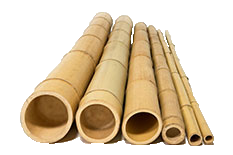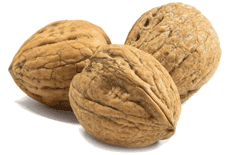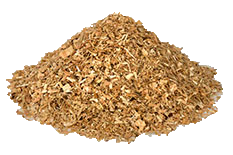Introduction to Biomass and Activated Carbon
What is Activated Carbon?
Activated carbon, also known as activated charcoal, is a highly porous form of carbon with an enormous surface area. It’s a powerhouse material used to trap toxins, purify liquids and gases, and even store energy. But here’s the catch: not all activated carbon is created equal—and the raw material used makes all the difference.
Why Biomass Materials Matter in Carbon Production?
Traditionally, non-renewable resources like coal were the go-to source for carbon production. But, the tides are shifting. Biomass materials—organic waste from plants and animals—are gaining ground. They’re not just eco-friendly; they’re also efficient, abundant, and often cheaper to use.
Advantages of Using Biomass Materials for Activated Carbon
Sustainability and Renewable Resources
Using biomass is like turning trash into treasure. Think coconut shells, sawdust, bamboo, and even walnut shells. These materials regenerate naturally and are often by-products of other industries, making them a sustainable win-win.
Cost-Effectiveness
Let’s be honest—cutting costs is always a good thing. Biomass materials are often locally available and inexpensive. This means lower production costs and better margins without compromising on quality.
Lower Carbon Footprint
Carbonizing biomass emits fewer greenhouse gases compared to fossil-based materials. Plus, many types of biomass absorb CO₂ while growing. That’s like nature giving you a free carbon credit.
Common Biomass Materials Used in Activated Carbon Production
Coconut Shell
Tough, dense, and full of carbon—coconut shells are one of the most popular biomass materials. They produce activated carbon with high hardness and low dust, perfect for gas and water purification.
Bamboo
Fast-growing and widely available, bamboo is a sustainability star. Bamboo-based carbon is lightweight, highly porous, and perfect for odor control and air purification.

Walnut Shell
Often discarded after processing, walnut shells are a goldmine for carbon production. Their granular texture makes them ideal for abrasive and filtering applications.

Sawdust
Sawdust seems like a waste product, but it’s actually a lightweight, high-yield source of carbon. Easy to process and rich in lignin, it’s excellent for producing activated carbon with uniform pore structure.

Petroleum Coke (Petcoke)
While not a biomass material in the strictest sense, petcoke is often grouped in for its high carbon content. It’s a low-cost choice for industrial carbon applications, though less eco-friendly than true biomass sources.

Other Biomass Candidates
Rice Husk
Rice husks are packed with silica and carbon—making them perfect for specialty applications like metal recovery and water purification.
Corn Cobs
Don’t overlook these! Corn cobs yield a well-balanced activated carbon ideal for use in air purification systems.
Palm Kernel Shell
This tropical biomass material is increasingly used in Asia and Africa. It offers high fixed carbon content and is suitable for high-grade carbon applications.
Comparison of Biomass Materials: Pros and Cons
Physical Properties
Some materials like coconut shells and walnut shells are naturally hard and granular, giving them an edge in mechanical strength. Others like sawdust offer ease of processing but produce more fine particles.
Carbon Yield
Coconut shells and bamboo generally offer higher carbon yields, making them more efficient. On the other hand, rice husks and corn cobs need blending for optimal output.
Availability and Accessibility
Sawdust and rice husks are virtually everywhere—especially near lumber and rice mills. Coconut shells and palm kernel shells are abundant in tropical regions, making logistics a key factor in material choice.
How Machines Turn Biomass into Activated Carbon
Step-by-Step Overview of the Production Process
- Crushing: The biomass is crushed into smaller pieces.
- Drying: The moisture is removed to ensure even carbonization.
- Carbonization: Materials are heated in an oxygen-limited environment.
- Activation: Using steam or chemicals, the carbon is activated to open up its pores.
- Cooling and Collection: The final product is cooled and collected for packaging.
Technologies Involved
Modern carbonization machines include rotary kilns, vertical carbonization furnaces, and continuous carbonization plants. Automation and real-time monitoring ensure consistent quality.
Key Features of Modern Carbonization Machines
- Energy-efficient design
- Continuous operation capability
- Emission control systems
- Flexible feedstock input
- Compact footprint
Industries Benefiting from Biomass-Based Activated Carbon
Water and Air Purification
From removing chlorine in tap water to trapping VOCs in the air, biomass-based activated carbon is a go-to solution for cleaner living.
Food and Beverage Industry
Ever wondered how your sugar is so white? Activated carbon helps decolorize and purify food-grade liquids.
Pharmaceuticals and Chemicals
Activated carbon is used in decolorizing agents, gas purification, and even life-saving medical applications like poison treatment.
Energy Storage (Batteries & Supercapacitors)
High surface area carbon from coconut shells and bamboo is increasingly used in advanced energy storage tech.
Market Trends and Future Outlook
Growing Demand for Green Carbon
Consumers and industries alike are shifting towards eco-friendly solutions. Biomass-based activated carbon checks all the boxes for clean, sustainable tech.
Government Support and Regulations
From subsidies to environmental laws, governments are backing renewable carbon production in a big way.
Innovations in Biomass Carbonization Equipment
AI-driven machines, modular systems, and improved activation methods are pushing the limits of what biomass carbon can do.
Conclusion
Biomass materials are changing the game in activated carbon production. They’re sustainable, affordable, and incredibly versatile. Whether it’s coconut shell, bamboo, or even sawdust, these humble materials are unlocking a cleaner, greener future—one carbon particle at a time. So if you’re in the business of activated carbon, it’s time to lean into the biomass revolution.
FAQs
1. What are the best biomass materials for high-quality activated carbon?
Coconut shells, bamboo, and walnut shells are often considered top-tier due to their high density and carbon yield.
2. Can petroleum coke be considered a biomass material?
Not exactly—petroleum coke is a fossil fuel derivative, but it’s still used in some carbon production due to its high carbon content.
3. How long does the carbonization process take?
Depending on the machine and material, it typically ranges from 30 minutes to several hours.
4. What is the lifespan of an activated carbon production machine?
With proper maintenance, machines can last 8–15 years or more.
5. Is it possible to mix different biomass materials during processing?
Yes! Blending materials can optimize yield and tailor the carbon’s properties for specific applications.
